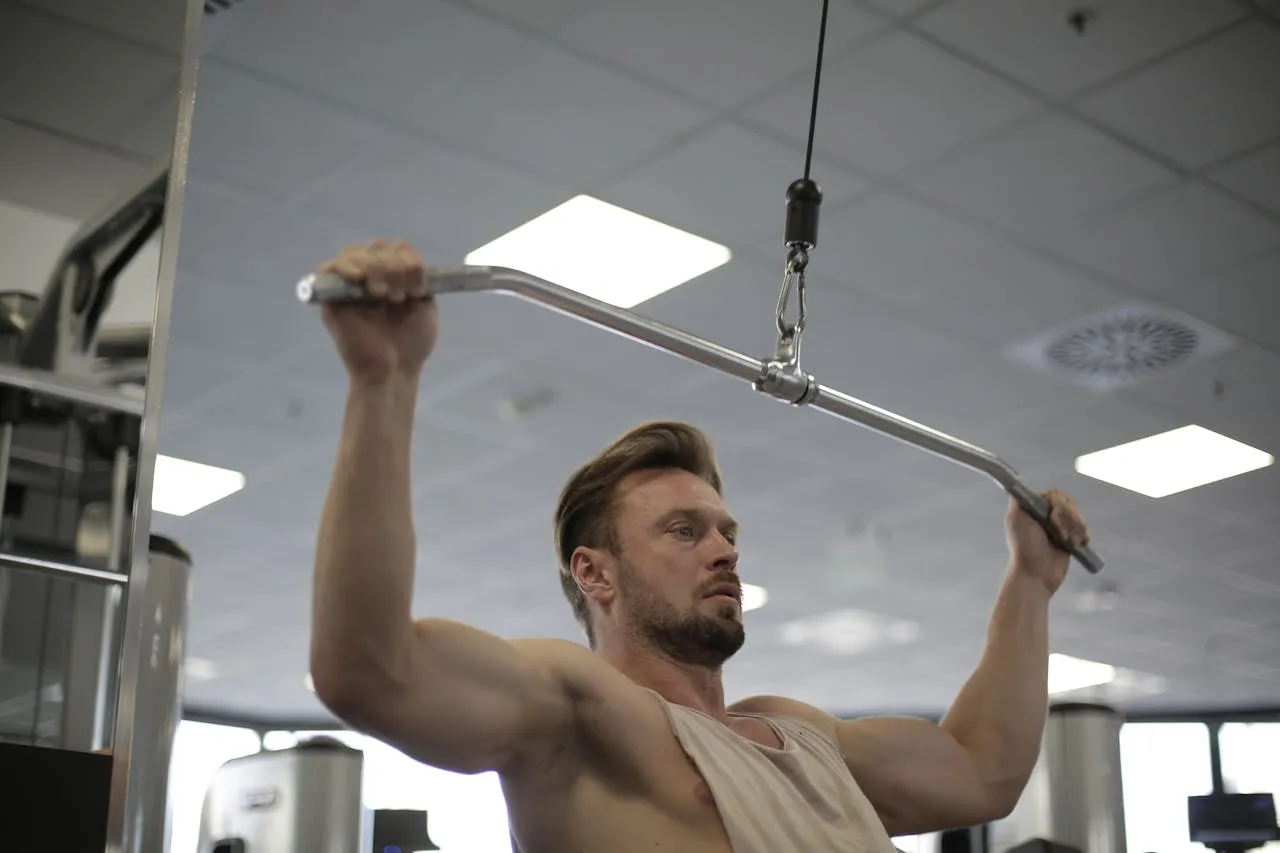 Friday, June 20, 2025
Friday, June 20, 2025Lat Pulldown: Technique, Benefits, and Common Mistakes
A well-trained back is not just a visual highlight—it is the foundation for strength, posture, and healthy movement in everyday life and sports. One of the most effective machine exercises for developing the broad back (latissimus dorsi muscle) is the lat pulldown. But how does this exercise work exactly? How should it be performed to achieve optimal results? And what do scientific studies say about its effectiveness compared to pull-ups or other back exercises?
In this blog, you will get all the answers—and much more.

What is the Lat Pulldown?
The lat pulldown (often referred to as "lat pull" in German) is a strength exercise performed at a cable machine or a dedicated lat pull machine. You pull a wide or narrow bar from above your head towards your upper body while sitting, with the thighs fixed.
The primary target muscle is the latissimus dorsi — the largest and broadest back muscle. The biceps, rear shoulders, and parts of the core musculature provide support during this exercise.

Why incorporate the Lat Pulldown into your training plan?
- Muscle development in the back: Scientific research indicates that the lat pulldown stimulates latissimus activation almost as strongly as pull-ups (Youdas et al., 2010).
- Scalability: Unlike pull-ups, the weight in the lat pulldown can be individually adjusted, making it particularly suitable for beginners but also for advanced athletes.
- Posture improvement: Regular lat training supports an upright body posture and helps prevent shoulder and neck tension.
- Transfer to other exercises: A strong back improves performance in deadlifts, rowing, and even bench pressing.

Scientific Insights on Effectiveness
A study by Signorile et al. (2002) examined different grip variants in the lat pulldown and found that a wide overhand grip activates the latissimus most strongly, while a narrow grip increases biceps involvement.
Lusk et al. (2010) further showed that front lat pulldowns (pulled in front of the chest) are safer and more effective than behind-the-neck pulls, as the risk of shoulder injuries is significantly higher in the latter.
Additionally, Youdas et al. (2010) compared muscle activation during lat pulldowns versus traditional pull-ups. The result: Both exercises are nearly equally effective for the latissimus, with pull-ups generally demanding more core stability.

Proper Execution
| Phase | Execution Recommendation |
|---|---|
| Starting Position | Sit upright, feet stable on the floor, thighs fixed under pads, grip width generally slightly wider than shoulder-width. |
| Pull Phase | Pull the bar in a controlled manner in front of the chest, elbows pointing slightly downwards, actively retract shoulder blades (retraction). |
| End Position | The bar reaches approximately the collarbone or upper chest area, with no swinging or excessive leaning back. |
| Return | Slowly and controlledly let the bar rise back up while maintaining tension in the back, avoiding shoulder elevation. |

Common Mistakes
- Using body momentum
- Grip too narrow or too wide
- Behind-the-neck pulling instead of front pulling
- Letting the bar rise too high without full contraction
Variants of the Lat Pulldown
| Variant | Main Differences and Objective |
|---|---|
| Classic front pull, wide grip | Maximum latissimus activation |
| Narrow underhand grip (supinated) | More biceps involvement, good beginner exercise |
| One-arm lat pulldown | Correction of muscular imbalances |
| Cable variant | More mobility and control training |

Comparison: Lat Pulldown vs. Pull-Up
| Criterion | Lat Pulldown | Pull-Up |
|---|---|---|
| Scalability | Freely adjustable weight | Body weight as a limit |
| Technique learning | Easier | Requires more core tension |
| Latissimus activation | High (dependent on execution) | High (slightly higher core activity) |
| Injury risk | Low with correct technique | Higher with poor core control |
| Beginner entry | Very well suited | Challenging for beginners |

Conclusion
The lat pulldown is an exceedingly effective exercise for anyone looking to develop a broad and strong back. Unlike pull-ups, it offers better scalability and allows both beginners and advanced individuals to specifically and controllably strengthen the latissimus and supporting muscles.
Scientific studies confirm that it can measure up to pull-ups in latissimus activation—with the additional advantage of being able to adjust the training weight individually. For optimal results, the lat pulldown should be consistently integrated into the training plan, with varying grips and controlled technique.


